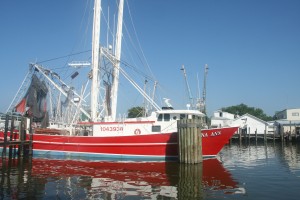
According to the Washington Post, the US has overcome bipartisan politicking long enough to enact amendments to the Magnusen-Stevens Act that puts all fishery stocks into management – not just those threatened by overfishing. In practice, that means each stock has an absolute maximum catch limit for 2012. Perhaps the most resounding success of this policy is that it actually addresses scientific criticism of current management (covered fairly well by MAST) that implementing catch limits for one species just shifts fishing effort to other species – which then must have yet another species-specific policy put in place after overfishing occurs. Implementing fishery management plans for all fishery species at once eliminates the by-the-seat-of-your-pants feeling that previous US management conjures.
Of course, putting new fish under management means high demand for information on those fisheries – especially popular game-fish such as wahoo and mahi-mahi. Managers acknowledge that fisheries reporting from the commercial sector is barely enough information to put together a management plan – even though it gives biomass and location for every fish caught commercially. Since many recreational catches aren’t reported at all, the new regulations will require some creative thinking on the part of researchers to make the best estimates of maximum catch possible. It’s a very tall order, with thousands of livelihoods of fishers and their communities on the line.
The new amendments are a good step toward thinking about the ecosystem as a whole – and allocating catches for commercial, recreational, and predatory species. Although these are groups that have historically not played well together in the past, unilateral support from both the Bush and Obama administrations for the new Magnusen-Stevens Act shoudl send a message of need. Also, specific management details and catch limits will be determined by regional management councils – consisting of fishermen and scientists, not politicos. That helped the law move along thus far and both environmental organizations and fishery groups have high hopes that implementation will happen this year, with measureable results in the form of larger stocks, in 2013.
Apparently, Washington has decided to wear its optimist hat for a while and sit down at the table to solve a big fisheries problem in the time scale of a fish generation.

In your opinion, is this going to lead to mandatory reporting of recreational fishing catches?
Also, why do you say “Of course, putting new fish under management means high demand for information on those fisheries – especially popular game-fish such as wahoo and mahi-mahi.” Is this information for making limits by management? Or is it for the expected increase in commercial fishing? I’m lost.
I’ll tackle the last question first – the information is for making stock assessments, which are used to set the catch limits. Fisheries not currently under management have no one watching, counting, or really understanding them – from either a commercial or recreational standpoint.
Will the law lead to mandatory reporting? I’m guessing that’s a bit ambitious. But they do already have observers out on docks attempting to do a kind of sampling scheme. If you assume that the average angler catches 1 drum, for instance, based on these interviews, you can multiply by the number of recreational fishing permits issued and get an idea of overall catch.
In saying mandatory reporting is ambitious, does that mean it’s a goal you’d like to see happen? I’m all for volunteer reporting, but mandatory… No ma’am.
Anddd i think I understand. Let’s see, and correct me where I’m wrong.
1. ‘Fisheries’ is referring to open-water catching of fish.
2. I’m assuming marine biologists monitor stock levels of most fish
3. These numbers dictate population increases and decreases.
4. The catch counts for regulated fish are modified accordingly (commercial or rec)
5. Commercial fisheries must report all catch data on regulated fish.
6. When modifications to catch limits might hurt a a fishery, the fill in the void—so to speak—with unregulated fish.
7. Fisheries that take unregulated fish don’t need to report.
8. Non-reporting of unregulated fish means nobody know’s what the hell is going on with them other than a population count (above #2)
9. Which leads to: a demand for knowledge about these unregulated fish and fisheries, so that marine biologists can determine a sort of cause and effect of populations, in order to determine a good policy toooooo *deep breath* properly regulate the fishing industry…
When I first asked I was thinking it had something to do with commercial fisheries wanting more information on how to better exploit unregulated fish. I think I got it now.
I haven’t formed an opinion about the policy changes. Instead, I’d like to point out that MRFSS is great, but you can’t assume every angler cactches a drum. In fact, outside reviewers recently faulted the extrapolations methods NMFS uses for recreational fisheres. I think the idea of ecosystem based management is a great start, but the practice will be very difficult.